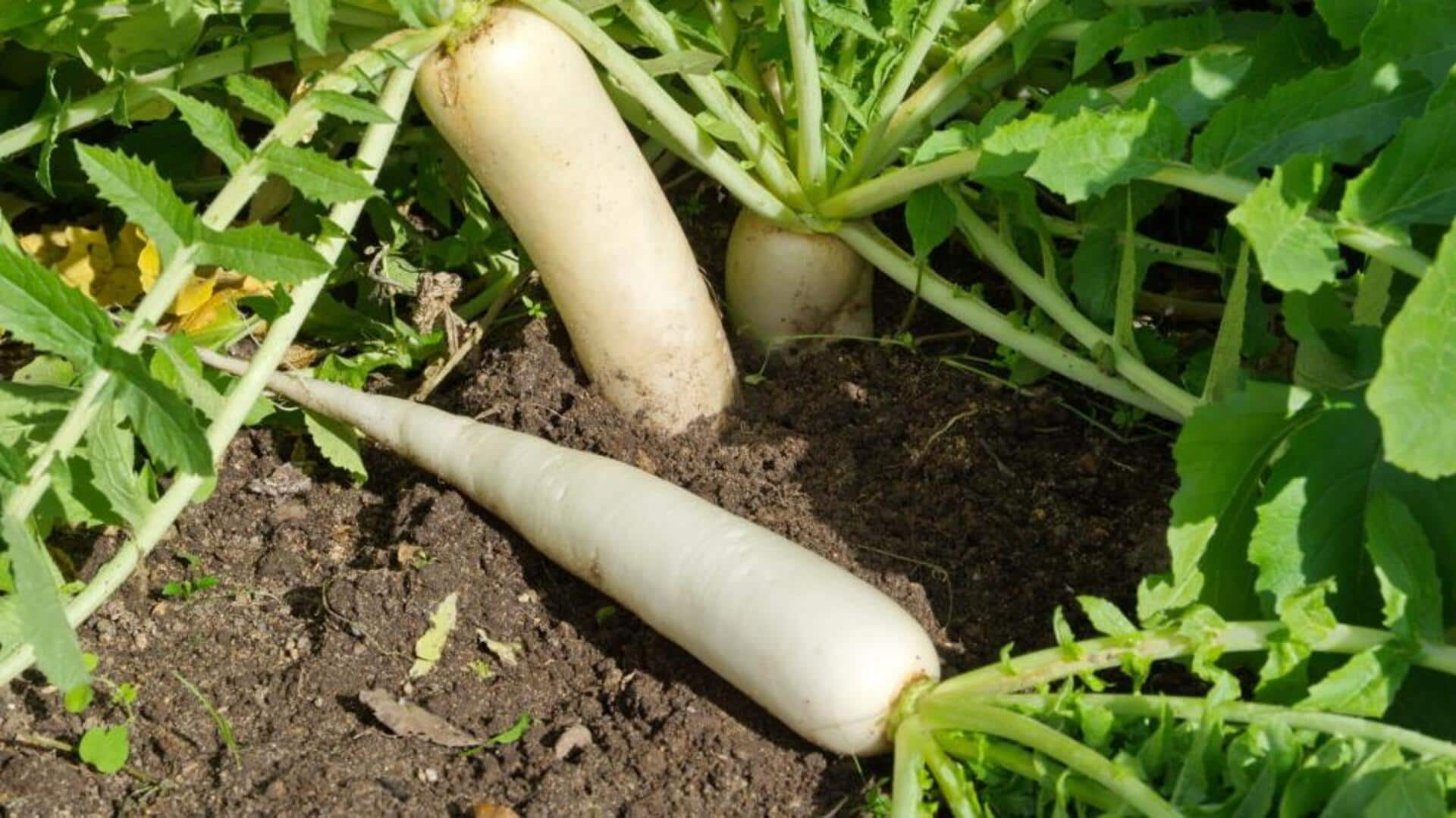
Growing radishes at home? You must read these important tips
What's the story
Radishes are a favorite among gardeners for their rapid growth cycle and low-maintenance nature. But, like with any plant, getting a good harvest involves more than just sowing seeds. This article offers five crucial tips for growing strong, healthy radishes that flourish in your garden, guaranteeing a crisp, tasty yield.
Variety Choice
Select the right variety
Different radish varieties excel in different conditions. Some are cool-season champions, while others love the heat. For instance, 'Cherry Belle' and 'French Breakfast' are perfect for spring planting because they handle cooler soil temperatures well. Understanding the specific needs of each variety guarantees you pick a winner for your local climate and soil conditions.
Soil preparation
Prepare the soil properly
Radishes thrive in loose, well-draining soil abundant in organic matter. Before sowing seeds, cultivate the soil to a minimum depth of eight inches and incorporate compost to enhance fertility and texture. This preparation ensures radish roots can develop unimpeded, avoiding misshapen or stunted growth resulting from compacted or nutrient-deficient soil.
Plant spacing
Ensure adequate spacing
Overcrowding results in small, underdeveloped radishes. When sowing seeds, ensure a spacing of about one inch apart in rows that are 12 inches apart. Once seedlings emerge and reach about two inches tall, thin them out so that each plant has sufficient space for growth. This spacing promotes healthy root development and maximizes air circulation among plants.
Irrigation practices
Water wisely
Radishes need steady moisture to grow well but they can't handle waterlogged conditions. Aim for about one inch of water per week, either through rainfall or by watering yourself. Watering deeply once or twice a week is better than watering lightly every day. Deep watering encourages the roots to grow deeper, which is good for the plant.
Pest management
Monitor for pests regularly
Flea beetles and root maggots can devastate radish crops if not managed. Inspect plants regularly for signs of infestation, such as holes in leaves or wilting despite sufficient watering. Using physical barriers like row covers can effectively prevent pests from accessing plants while still allowing light and water to pass through.